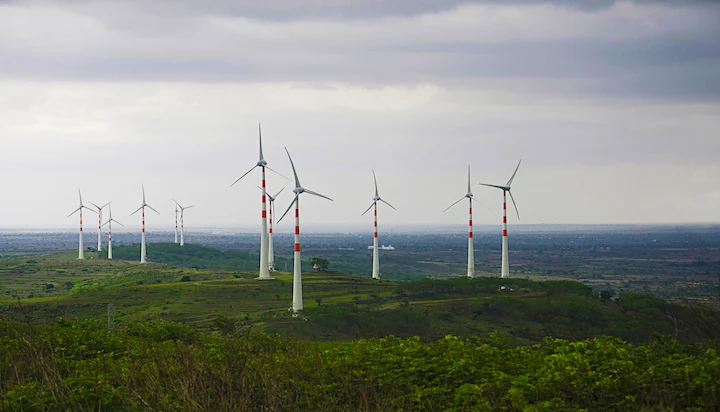New Delhi: Energy intensive heavy Industries are a critical pillar in India’s economic growth aspirations. They are also a key contributor to India’s direct and indirect Carbon emissions. Given rapid economic growth and urbanization, demand from these industries is expected to grow significantly over the next few decades – growth that could lead to proportionately higher GHG (greenhouse gases) emissions. As India seeks to balance its economic growth ambitions with its green transition, it will be critical to evolve a carbon-neutral industrial model for sustainable growth.
However, a low carbon pathway in heavy industries is significantly more difficult compared to other areas such as Power and Transportation. About 40 per cent of emissions in energy intensive industries are from fossil fuel feedstock and switching to alternate feedstock will require a complete change in production process and technologies. Another one-third of emissions are from burning fossil fuel to generate very high temperatures, where alternative technologies are underdeveloped or very expensive. For example, switching to renewable power for high temperature applications will require electric furnaces, which are still maturing as a technology and face significant cost viability challenges. Given the capital intensive nature of these industries, rebuilding for new process or technology with a lower GHG footprint is a significant capital investment that is difficult to finance with today’s inherent sector economics. In addition, given high contribution of energy or feedstock in cost and low willingness from end customers to pay a premium for green products, investments in GHG reduction technologies are often financially unviable. As such, energy intensive industries are amongst the ‘hardest to decarbonize’ sectors.
Over the last decade, industries have focused on incremental measures where GHG reduction helped in profitable growth – e.g. improved energy efficiency, waste heat recovery, and partial substitution of high GHG feedstock (e.g. clinker reduction in cement). However, an accelerated path to net zero will require acting on a combination of demand measures such as promoting circular economy, continued push on energy efficiency, electrification of heat with renewables, carbon sequestration (carbon capture, utilization & storage), zero-carbon fuels such as biomass and green hydrogen, and deployment of new innovative technologies with non-fossil feedstock. Specifically, a low carbon pathway for three key energy intensive industries – iron & steel, cement, and chemicals & fertilizers – would include the following:
– Iron and Steel represents close to 10% of India’s total GHG emissions. Given the current production setup with heavy dependence on coal for energy (more than 80% of energy inputs) and DRI furnaces, Indian iron and steel industry has the highest GHG footprint among heavy industries. Decarbonizing this sector will require a combination of measures such as BF/BOF efficiency improvements, increased scrap recycling, shift towards electric arc furnaces, biomass as fuel as well as new technologies such as carbon capture and use of hydrogen to replace coke.
– Cement industry is another significant GHG emitter with CO2 emitted both from chemical process as well as energy consumption associated with the manufacturing process. Given the increasing demand from ambitious infrastructure programs and housing schemes, it is critical to develop a net zero path for this industry. While the sector is on track to achieve its 2030 carbon reduction goals set within Low Carbon Technology Roadmap, a net zero pathway will require significant change in production process and adoption of new technologies. In the short term, adoption of fly ash to reduce cement to clinker ratio and energy saving technologies such as advanced kilns, APCs, etc. should be accelerated. In the long term, maturing of technologies such as kiln electrification with renewable power, carbon capture on process emissions and hydrogen as high temperature fuel will be critical.
– Indian chemical & fertilizers industry is sixth largest globally and rapidly growing at 10-15 per cent CAGR. This sector accounts for 12% of total manufacturing emissions, primarily driven by feedstock usage (e.g. natural gas in ammonia) and utilities (heat and power). Fertilizers and Petrochemicals (especially plastics) are the two chemical groups which have the highest GHG intensity. Adoption of renewable power to replace coal-based electricity has already started in the sector. Incremental efficiency measures and improvement in catalyst technologies are ongoing. However, a step change in GHG emissions will require maturing three key technologies – green hydrogen for fertilizers feedstock, electrification of cracker furnaces for petrochemicals production, and deployment of circular economy models such as recycling.
With more than 60 large Indian companies and several multinationals operating in India volunteering for SBTi (Science Based Targets initiative) based emissions reduction targets, India’s industrial decarbonization plan is off to a good start. But a lot more needs to be done. In the most significant GHG emitting sectors, only between a fifth and a quarter of abatement needed for 1.5 degree Celsius targets can be achieved through existing commercially viable technologies.
Key success factors for India will include the relative decline in cost of decarbonized versus conventional commodities, availability of resources (such as biomass or geological storage space for captured CO2), and the feasibility of adapting old as well as new facilities. Enabling the transition will require investment in R&D to make emerging new technologies such as hydrogen affordable, policy support and incentives from government to steer industry towards sustainable technologies, and increased global collaboration.
Source: infrabuddy.com









